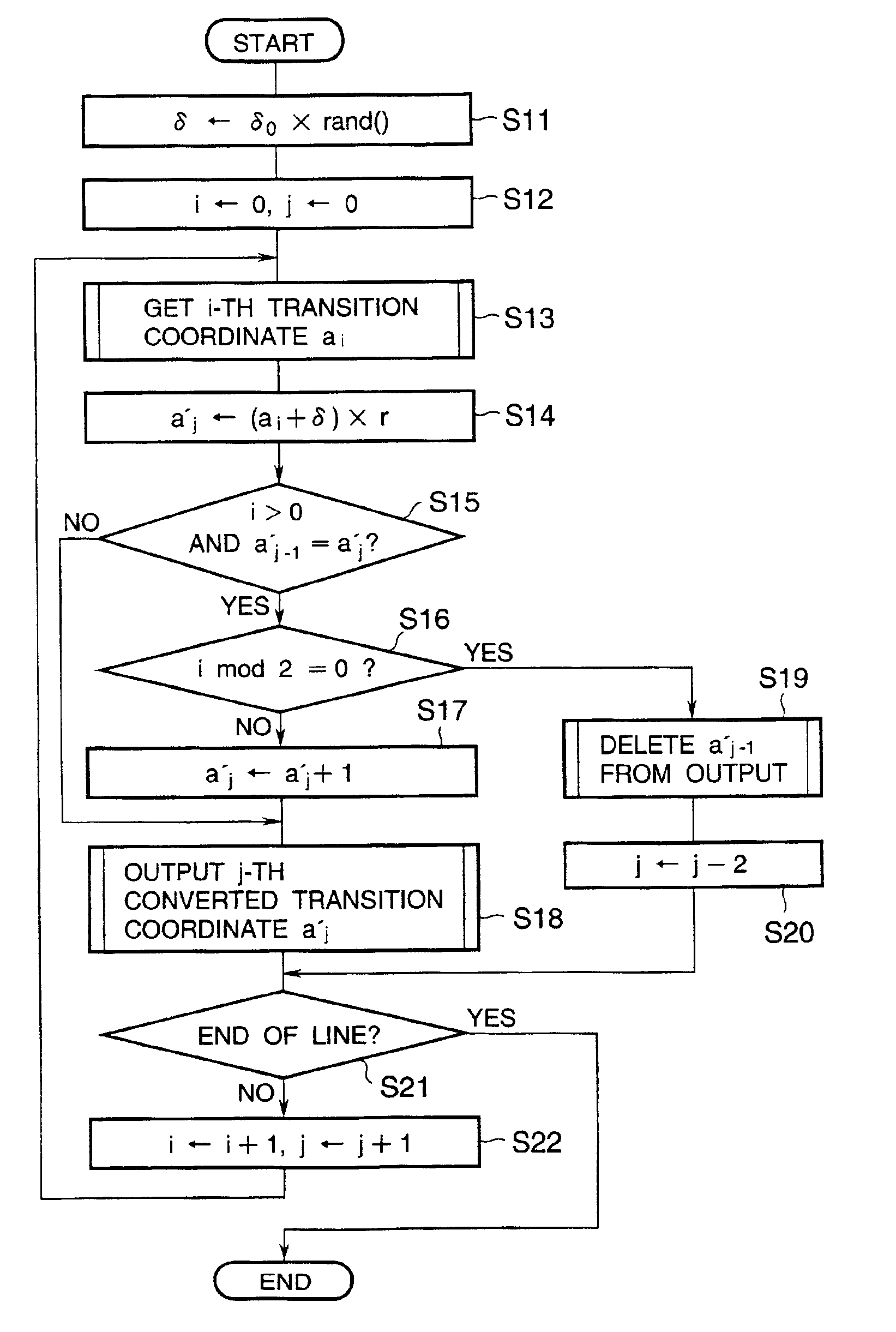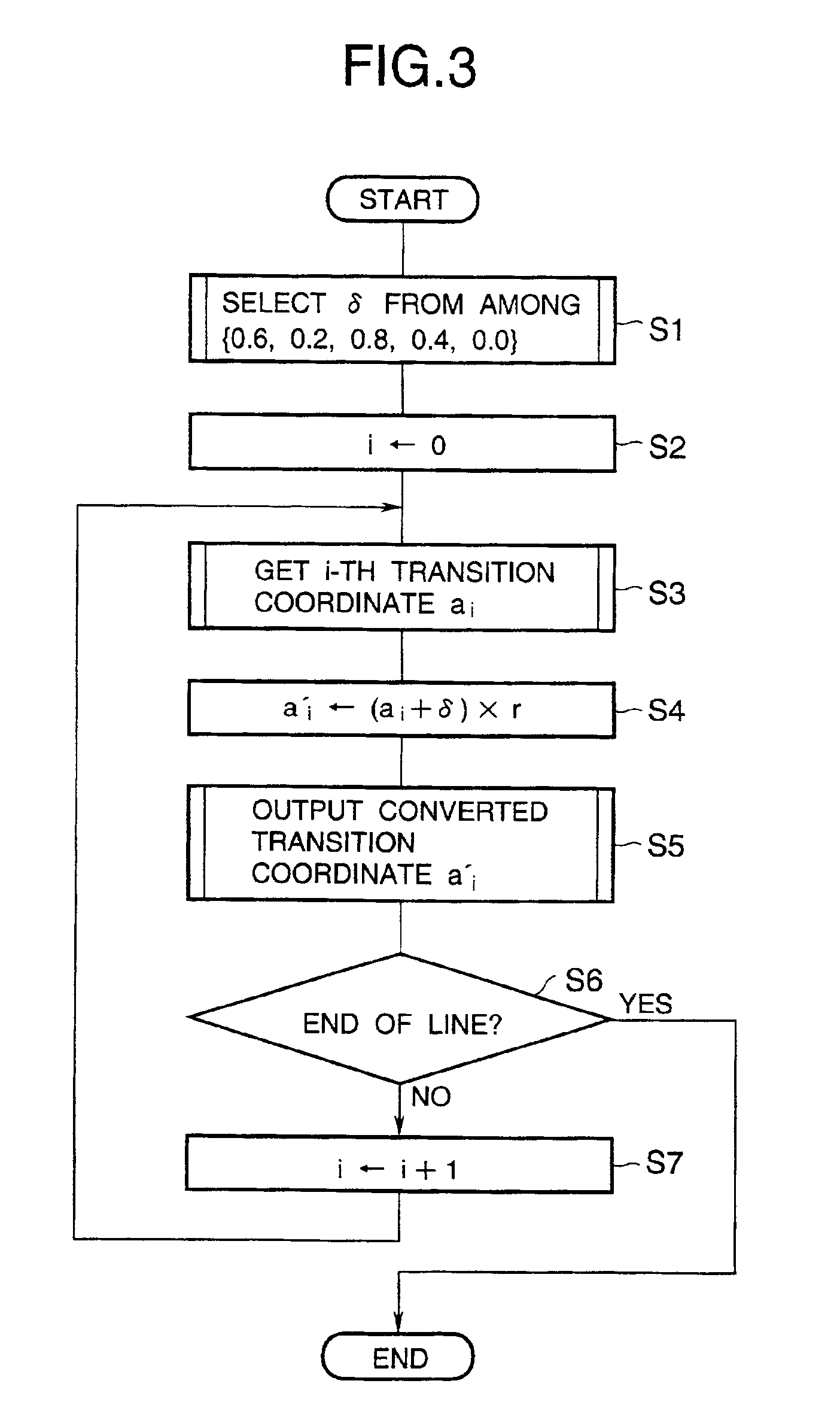Facsimile machine and image margin adjustment method
- Summary
- Abstract
- Description
- Claims
- Application Information
AI Technical Summary
Benefits of technology
Problems solved by technology
Method used
Image
Examples
first embodiment
[0028]Referring to FIG. 1, the first embodiment is a facsimile machine comprising a receiving unit 1 coupled to a communication line 2, an image memory 3 coupled to the receiving unit 1, an image data decoding unit 4 coupled to the image memory 3, and a printing unit 5 coupled to the image data decoding unit 4. The image data decoding unit 4 comprises an entropy decoder 6 and a run-length decoder 7, and is coupled to a novel margin detector 8. The run-length decoder 7 also functions as an adjustment unit.
[0029]The facsimile machine in FIG. 1 receives and prints a transmitted document as follows.
[0030]The receiving unit 1 stores the document data, received from the communication line 2, in the image memory 3. The document data have been coded by run-length coding and entropy coding at the transmitting facsimile machine (not visible), and are stored in coded form. The entropy decoder 6 reads the coded document data from the image memory 3 and performs entropy decoding to obtain run-le...
third embodiment
[0068]Natural images, and other images that generate moire patterns when zoomed, usually have more black-white transitions per scanning line than do text and line drawings, which do not generate moire patterns. Accordingly, when zooming a page, the run-length decoder 7 in the third embodiment counts the number n of transitions in each scanning line and compares this number n with a predetermined threshold N. If n is less than N, the scanning line is assumed to belong to a text or line-art part of the page, and is zoomed with a fixed offset value. If n is equal to or greater than N, the scanning line is assumed to be part of a natural image, and is zoomed with a randomized offset value.
[0069]For each scanning line, the procedure shown in FIG. 8 is followed. First, a random offset value e is calculated by multiplying a random number rand( ) by a fixed variance coefficient E (step S31). The random number rand( ) is between zero and one (0≦rand( )32). If there are fewer than N transitio...
PUM
 Login to view more
Login to view more Abstract
Description
Claims
Application Information
 Login to view more
Login to view more - R&D Engineer
- R&D Manager
- IP Professional
- Industry Leading Data Capabilities
- Powerful AI technology
- Patent DNA Extraction
Browse by: Latest US Patents, China's latest patents, Technical Efficacy Thesaurus, Application Domain, Technology Topic.
© 2024 PatSnap. All rights reserved.Legal|Privacy policy|Modern Slavery Act Transparency Statement|Sitemap



